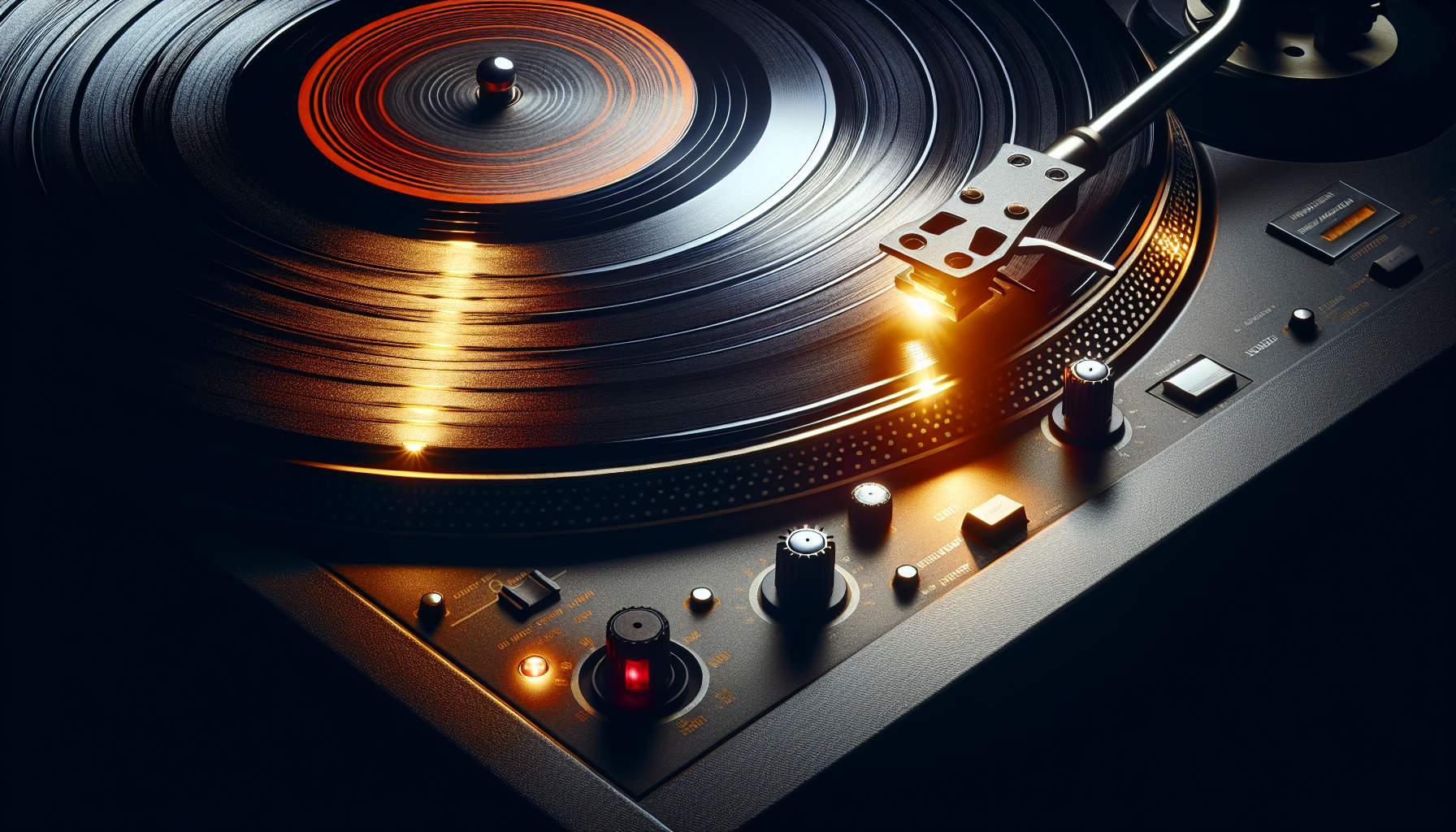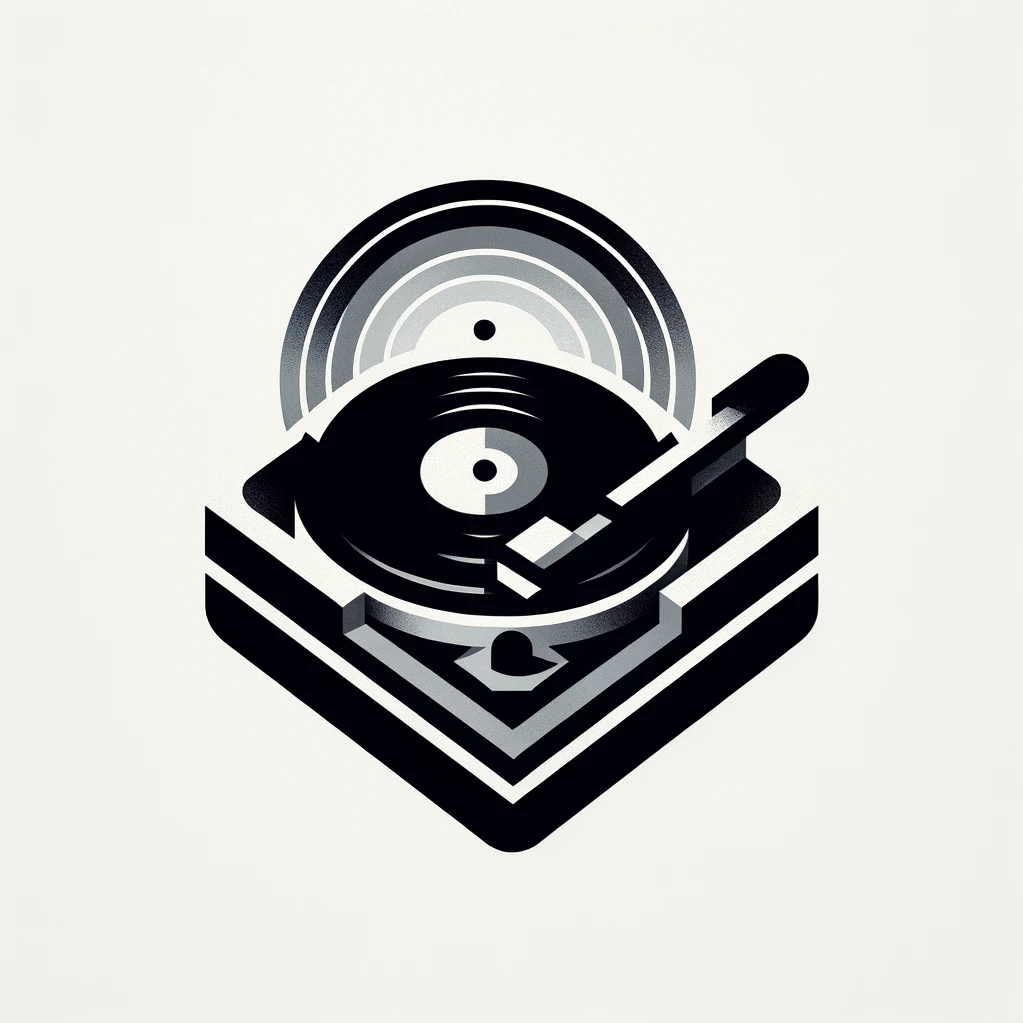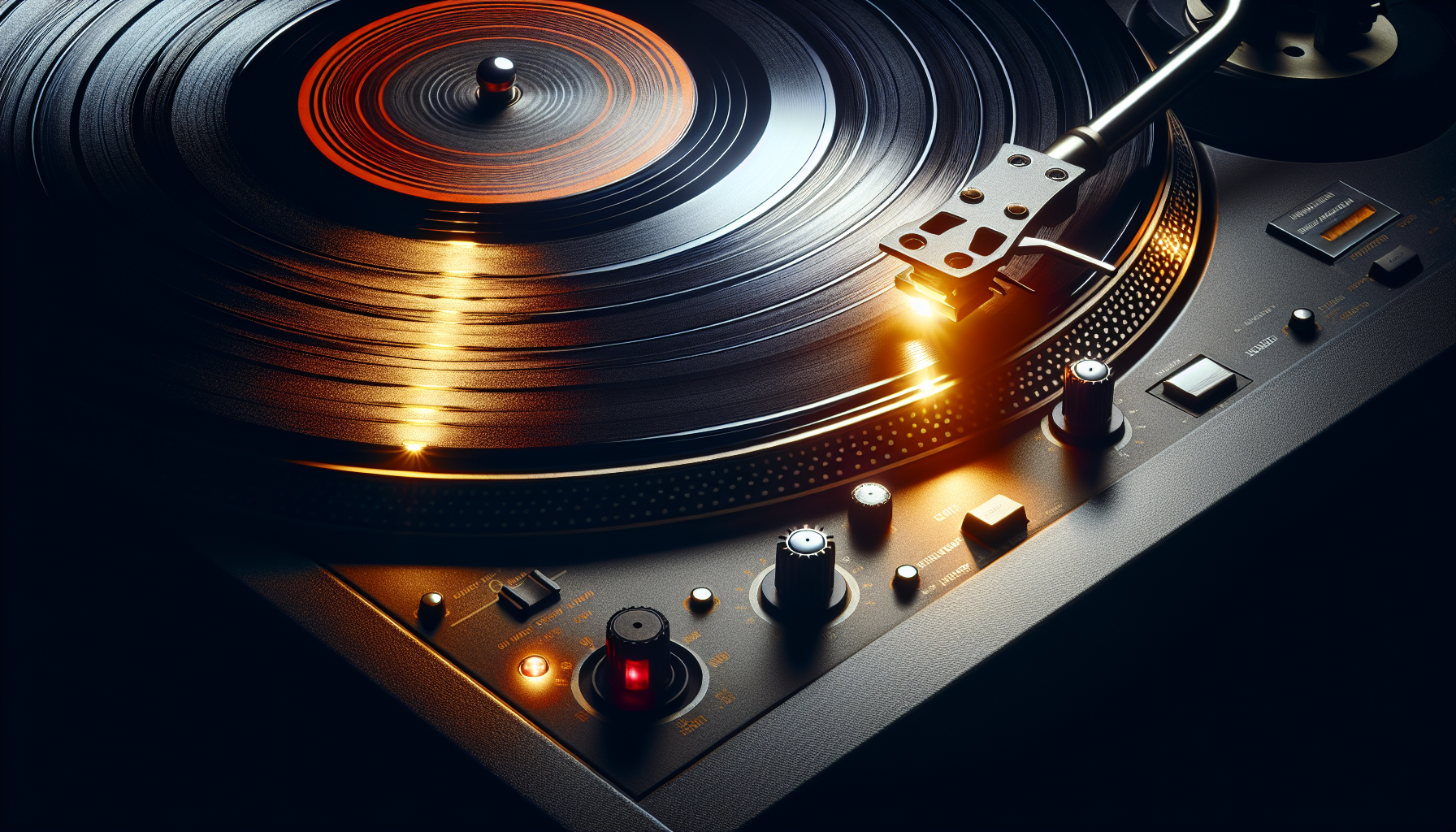Do you find yourself wondering about the distinction between a record player and a turntable? It’s a common question among music enthusiasts, as both terms are often used interchangeably. However, there are key differences between the two that can affect your listening experience. In this article, we will explore these dissimilarities and shed light on the subject, helping you better understand the nuances between a record player and a turntable. So, let’s dive in and uncover the distinctions that exist between these two audio devices.
Components
Turntable Components
A turntable consists of several key components that work together to play vinyl records. The main parts of a turntable are the plinth, platter, motor, tonearm, and cartridge.
The plinth, or base, provides stability and helps reduce vibrations that can affect sound quality. It is typically made of wood or other materials designed to dampen vibrations. The platter sits on top of the plinth and spins the vinyl record. It is usually made of aluminum, acrylic, or other materials that provide a smooth and stable surface for the record to sit on.
The motor is responsible for spinning the platter at a consistent speed. There are two types of motors commonly used in turntables: belt-drive and direct-drive. Belt-drive turntables use a rubber belt to connect the motor to the platter, while direct-drive turntables have the motor directly built into the center of the platter. Each type of motor has its advantages and affects the overall performance of the turntable.
The tonearm is the component that holds the cartridge and stylus, which track the grooves on the vinyl record. It is responsible for translating the physical movement of the stylus into an electrical signal that can be amplified and reproduced as sound. A high-quality tonearm is vital for accurate tracking and minimum distortion.
The cartridge is an essential part of a turntable because it contains the stylus, which is the needle that comes into contact with the grooves on the record. There are various types of cartridges available, including moving magnet (MM) and moving coil (MC) cartridges. The choice of cartridge can significantly impact the sound quality and overall performance of the turntable.
Record Player Components
A record player, sometimes referred to as a “turntable,” is an all-in-one system that includes a turntable, amplification, and built-in speakers. Unlike a traditional turntable, a record player does not require additional components for playback.
In addition to the components found in a turntable, a record player usually has a built-in pre-amplifier and amplifier. The pre-amplifier boosts the weak electrical signal produced by the cartridge, making it suitable for amplification. The amplifier then increases the signal to a level that can drive the built-in speakers or external speakers.
Most record players also feature built-in speakers, which means you do not need a separate sound system or speakers to enjoy your vinyl records. This feature makes record players more convenient for those who want a simple and compact setup. However, the quality of the built-in speakers may not match that of external speakers, so keep that in mind if you prioritize sound quality.
Technology
Analog vs Digital
One of the key distinctions between record players and turntables is the technology they use. Turntables are primarily analog devices, while record players often incorporate digital technology.
Analog technology refers to the process of reproducing sound by directly translating physical vibrations into electrical signals. Turntables use this analog technology to read the vibrations from the grooves on vinyl records, which are then amplified and reproduced as sound. Many audio enthusiasts argue that analog technology offers a warmer, more natural sound that captures the intricacies and nuances of the original recording.
On the other hand, record players often incorporate digital technology in the form of built-in pre-amplifiers and digital signal processing (DSP). These additions allow for various features such as equalization, Bluetooth connectivity, and USB output for digitizing vinyl records. While digital technology can offer added convenience and versatility, purists may prefer the pure analog sound reproduction of a traditional turntable.
Playback Method
Another significant difference between record players and turntables lies in the playback method. Turntables require an external sound system or speakers to reproduce sound, whereas record players have built-in amplification and speakers.
With a turntable, you have the freedom to choose your preferred sound system or speakers to complement the rest of your audio setup. This flexibility allows for customization and the ability to adjust and upgrade components as desired. However, it also means you need to invest in additional equipment to enjoy your vinyl records fully.
Record players, on the other hand, are ready to play out of the box. The built-in amplification and speakers make them a convenient option for those who want a simple and compact setup. They are an excellent choice for beginners or individuals who value simplicity and ease of use.
Sound Quality
Sound Reproduction
When it comes to sound quality, both turntables and record players have the potential to deliver excellent audio experiences. However, there can be variations in the sound reproduction due to differences in components and build quality.
Turntables, especially higher-end models, often prioritize sound quality. They typically have more precise and durable tonearms and cartridges, resulting in accurate tracking and reduced distortion. Furthermore, the absence of built-in amplification can provide better control over the audio signal without interference from internal electronics.
Record players, while still capable of delivering decent sound quality, may not match the performance of dedicated turntables and external audio systems. The built-in amplification and speakers may introduce some coloration or limitations in sound reproduction. However, advancements in technology have allowed some record players to offer impressive sound quality, particularly in the mid to high-end price ranges.
Tonearm and Cartridge
The tonearm and cartridge play a crucial role in the overall sound quality of a turntable. High-quality tonearms ensure accurate tracking, reduce unwanted resonances, and minimize distortion. Similarly, the cartridge, which contains the stylus, can greatly impact the sound reproduction of a turntable.
Turntables often offer a wider range of tonearm and cartridge options, allowing for more customization and the ability to tailor the sound to personal preferences. Audiophiles can select tonearms and cartridges that match their preferred sound signature or invest in higher-end options for improved performance.
Record players generally come with fixed or pre-installed tonearms and cartridges, limiting the ability to modify or upgrade these components. While this may restrict customization options, it ensures that the components are optimized for the specific turntable model. Therefore, record players can still provide enjoyable sound reproduction, especially for casual listeners.

Ease of Use
Manual Operation
One aspect where turntables and record players differ is in their ease of use. Turntables typically require more manual operation, making them ideal for individuals who enjoy a hands-on experience with their vinyl records.
To play a vinyl record on a turntable, you need to manually move the tonearm onto the record and lower the stylus onto the grooves. This level of involvement can be appealing to enthusiasts who appreciate the process and ritual of handling records. However, it does require some knowledge and practice to ensure proper alignment and avoid damaging the stylus or record.
Automatic Operation
Record players offer a more user-friendly and convenient experience due to their automatic operation. With a record player, you can simply press a button, and the tonearm will automatically move onto the record and lower the stylus onto the grooves. This automation eliminates the need for manual intervention and simplifies the process for casual listeners or individuals who prefer a more straightforward setup.
While automatic operation can be a significant advantage, especially for beginners or those with limited dexterity, it may not appeal to audiophiles who prefer more control and precision over the playback process. Additionally, automatic mechanisms can add complexity to the internal workings of a record player, potentially affecting longevity and performance.
Upgradability
Customization
One of the advantages of turntables over record players is the ability to customize and upgrade various components to enhance performance and tailor the sound to personal preferences. Turntables often offer options for upgrading the tonearm, cartridge, platter mat, and even the plinth.
Customization allows audiophiles to fine-tune their turntables based on their musical preferences and system requirements. By investing in higher-quality components, such as a premium cartridge or a precision tonearm, it’s possible to achieve a higher level of sound fidelity and accuracy.
Record players, while not as customizable, still offer some flexibility for adjustments. For example, you can often replace the stylus on a record player, ensuring continued sound quality. However, due to their integrated design, record players may have limitations when it comes to significant upgrades or modifications.
Modifications
Another advantage of turntables is the potential for modifications. Some enthusiasts enjoy experimenting with different components, tweaks, and adjustments to achieve specific sound characteristics or improve performance.
Modifications can range from upgrading internal wiring, adding vibration isolation features, or even replacing key components with aftermarket alternatives. These modifications allow individuals to create a truly customized turntable that matches their audio preferences and aspirations.
However, it’s worth noting that modifications require a certain level of technical expertise and can void warranties. It’s essential to follow proper guidelines and consult with experienced individuals to avoid any damage to the turntable or compromising its performance.
Portability
Size and Weight
When it comes to portability, record players have a significant advantage over turntables due to their compact and all-in-one design. Record players are typically lightweight and portable, making them easy to transport and set up in different locations.
The size and weight of turntables can vary significantly, especially when considering high-end models with additional features and robust construction. Some turntables can be bulky and heavy, requiring a more permanent setup or dedicated audio furniture.
If you value portability and the ability to listen to vinyl records in various settings, such as parties or outdoor gatherings, a record player offers the convenience of easy transportation and setup.
Built-in Speakers
Record players often include built-in speakers, which further enhances their portability. With a record player, you don’t need to worry about carrying external speakers or a sound system to enjoy your favorite vinyl records.
The built-in speakers are typically compact and designed to produce a satisfactory sound output. While they may not match the audio quality of high-end external speakers, they provide a convenient option for casual listening and smaller spaces.
If you prioritize portability and desire a simple setup without the need for additional components, a record player with built-in speakers may be the ideal choice.
Price Range
Entry Level
In terms of price range, both turntables and record players are available across a wide spectrum, catering to different budgets and needs. For individuals new to vinyl playback or those on a limited budget, entry-level options offer an affordable entry point.
Entry-level turntables usually provide the essential components necessary for playing vinyl records, such as a basic tonearm, cartridge, and motor. While they may lack some of the advanced features and higher-quality materials found in more expensive models, they can still deliver satisfactory sound quality and performance for casual listening.
Entry-level record players, on the other hand, provide an all-in-one solution at an accessible price point. They typically have built-in amplification, speakers, and basic components necessary for playback. These record players are often designed with simplicity and ease of use in mind, making them ideal for beginners or individuals who want a hassle-free setup.
Mid-Range
In the mid-range price category, both turntables and record players offer more features, improved build quality, and enhanced performance.
Mid-range turntables may introduce features such as adjustable tonearms, higher-quality cartridges, improved motor systems, and better isolation from vibrations. These additions enhance the overall sound quality and provide greater customization options for audiophiles seeking a more refined listening experience.
Mid-range record players often feature more powerful amplification systems, improved speakers, and better build quality. These additions result in a significant boost in sound quality compared to entry-level record players. Additionally, some mid-range record players may offer advanced connectivity options, such as Bluetooth or USB output for digitizing vinyl records.
High-End
For individuals who prioritize top-tier performance and are willing to invest in the highest quality components, both turntables and record players offer high-end options.
High-end turntables are often constructed with premium materials and incorporate cutting-edge technology to deliver exceptional sound quality. They feature advanced tonearms, top-of-the-line cartridges, precision-engineered motors, and superior vibration isolation. These turntables provide unmatched audio fidelity and are highly sought after by audiophiles and vinyl enthusiasts.
High-end record players, while less common, can still provide impressive sound quality and features. They may feature high-quality amplification systems, superior speakers, and refined design elements. These record players offer convenience without sacrificing audio performance and are preferred by those who want a premium all-in-one solution.
Durability
Mechanical Parts
The durability of both turntables and record players is affected by the quality of their mechanical parts. Components such as the plinth, platter, tonearm, and motor need to be robust and well-built to withstand regular use and potential wear and tear.
High-quality turntables are often constructed with sturdy materials and precision engineering, ensuring durability and longevity. The use of materials like MDF, acrylic, or metal for the plinth, and high-quality bearings for the platter, contributes to the overall durability and stability of the turntable.
Record players, being integrated systems, also require durable components to ensure long-term reliability. The internal mechanisms, such as motor systems and automatic features, need to be well-made and exhibit smooth and reliable operation over time. Quality control and attention to detail during manufacturing play a crucial role in the durability of a record player.
Electronics
In addition to mechanical parts, both turntables and record players contain electronic components that impact durability and performance. These include circuit boards, wiring, and electronic controls.
Turntables typically have relatively simpler electronic systems, as they primarily focus on analog signal reproduction. The circuitry and wiring should be well-designed and utilize quality components to minimize electronic noise and interference.
Record players, on the other hand, incorporate more extensive electronic systems due to their integrated design. The built-in amplifiers, speakers, and control circuitry need to be of high quality to ensure reliable performance and durability. Additionally, record players with digital features, such as Bluetooth or USB connectivity, must have well-implemented digital signal processing technology to avoid signal degradation and ensure accurate reproduction.
Functionality
Additional Features
Both turntables and record players can offer additional features beyond basic playback functionality, providing added convenience and versatility.
Turntables may feature speed control options, allowing you to adjust the rotation speed of the platter to match different vinyl records. Some turntables also offer anti-skate mechanisms, which help in maintaining accurate tracking and reducing distortion.
Record players often include integrated Bluetooth connectivity, allowing you to wirelessly connect your smartphone or other devices and stream music. This feature eliminates the need for additional cables or adapters, making it easy to enjoy your digital music collection alongside your vinyl records. Some record players may also include USB ports, enabling direct digitization of vinyl records into digital formats.
Connectivity Options
Both turntables and record players offer various connectivity options to interface with external audio systems or digital devices.
Turntables typically provide options for connecting to pre-amplifiers or audio receivers via RCA cables. This flexibility allows you to choose and upgrade your external audio equipment as desired. External audio systems often provide superior amplification and allow for precise control over the sound reproduction, making them preferred by audiophiles.
Record players, while designed for standalone operation, often include audio output options like RCA or headphone jacks. These outputs enable connection to external speakers or headphones for improved sound quality or private listening. Some record players also feature auxiliary inputs, allowing you to connect other audio devices or instruments.
Maintenance
Cleaning and Care
Regular maintenance is crucial to ensure optimal performance and longevity for both turntables and record players. Cleaning the various components and taking care of the vinyl records are essential practices for any vinyl enthusiast.
Turntables require periodic cleaning of the platter, tonearm, and stylus. Removing dust and debris from the platter, as well as cleaning the stylus with a specialized brush or cleaning solution, can help maintain accurate tracking and prevent buildup that can affect sound quality. Additionally, properly storing vinyl records in protective sleeves and handling them carefully can minimize scratches and other damage.
Record players also benefit from regular cleaning to remove dust and debris that can accumulate on the external surfaces, including the built-in speakers and control panel. Dusting the record player with a soft cloth and using specialized cleaning products for the speakers and controls can help maintain its appearance and performance.
Replacement Parts
Over time, certain components of both turntables and record players may require replacement due to wear and tear or damage. Having access to replacement parts is essential to keep your vinyl playback system running smoothly.
Turntables generally offer better availability of replacement parts due to their modular design and popularity among audio enthusiasts. Tonearms, cartridges, stylus, drive belts, and other components can be easily sourced and replaced, allowing you to extend the lifespan and improve the performance of your turntable.
Record players, being integrated systems, may have limitations when it comes to replacing specific components. However, essential parts like stylus replacement needles are often readily available for record players. It’s worth considering the availability of replacement parts when purchasing a record player, especially if you plan on using it for an extended period.
In conclusion, while both turntables and record players serve the purpose of playing vinyl records, they have notable differences in terms of components, technology, sound quality, ease of use, upgradability, portability, price range, durability, functionality, and maintenance. Understanding these differences can help you make an informed decision based on your preferences, budget, and desired audio experience. Whether you choose a turntable with external audio equipment or a record player for its convenience and built-in speakers, both options offer a unique way to enjoy the timeless and immersive sound of vinyl records.


